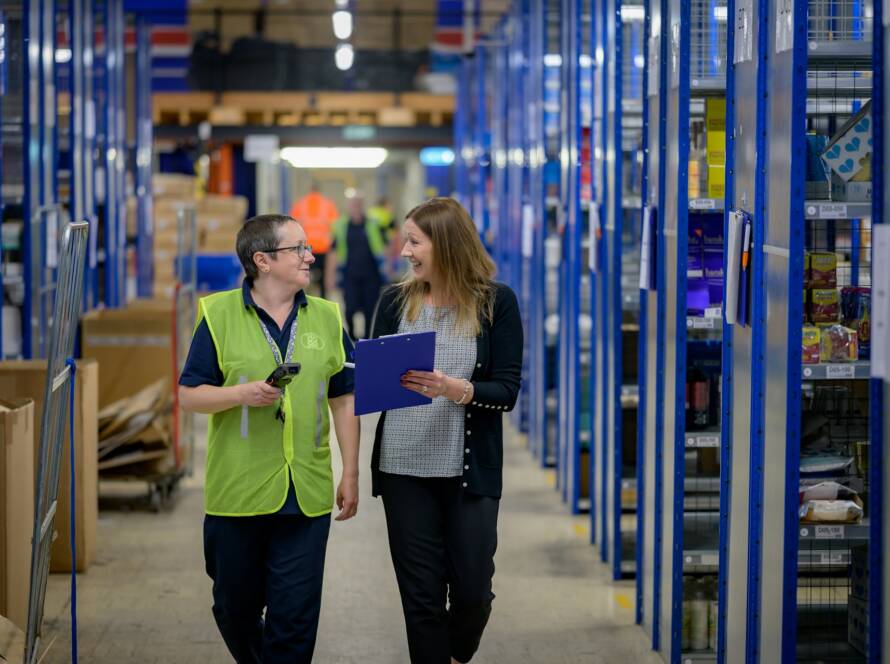Your company depends on servers running 24/7 to keep operations moving. Email, websites, customer databases, financial systems – they all rely on servers working perfectly. But what happens when your server room overheats? Everything stops. Your business grinds to a halt. Customers can’t buy from you. Employees can’t work. And every minute of downtime costs money.
This disaster scenario happens to businesses every day, but it’s completely preventable with proper temperature monitoring.
The Business Risk You Can’t Ignore
Server rooms are the nerve center of modern businesses. These specialized rooms house the computer servers that store your data and run your applications. They work around the clock, generating significant heat in the process.
When server room temperatures get out of control, the consequences are immediate and expensive:
Complete system shutdowns. Overheated servers automatically shut down to protect themselves. This means your website goes offline, email stops working, and employees can’t access critical files or applications.
Expensive equipment damage. Servers cost thousands of pounds each. When they overheat, internal components can be permanently damaged, requiring costly repairs or complete replacement.
Business downtime. When servers are down, your business often can’t operate. Online sales stop, transactions can’t be processed, and productivity plummets. Every minute of downtime costs money.
Data loss disasters. Overheated servers might crash while saving important information, potentially losing customer data, financial records, or years of work permanently.
Customer trust problems. When your systems fail, customers lose confidence in your business. Some may never return, even after problems are fixed.
Why Temperature Control is More Complex Than You Think
Maintaining proper server room temperature isn’t as simple as setting a thermostat. Multiple factors make this challenging:
Heat generation varies. Different servers produce different amounts of heat depending on workload. During busy periods, servers work harder and generate more heat.
Hot spots develop. Server rooms often have areas that get hotter than others due to poor air circulation or equipment placement. These hot spots can cause problems even when the overall room temperature seems acceptable.
Cooling systems fail. Air conditioning units and fans are machines that break down. When they fail, temperatures can rise dangerously within minutes.
Outside weather impacts inside conditions. During heat waves, cooling systems work harder to maintain proper temperatures. If they can’t keep up, server room temperatures start climbing.
24/7 operation requires constant vigilance. Unlike office spaces that can adjust when people leave, server rooms need perfect conditions around the clock. Problems can develop at 3 AM on weekends when no one’s around to notice.
The Cost of Traditional Monitoring Methods
Most businesses still rely on basic temperature control methods that often fail when needed most:
Simple thermostats only measure temperature in one location. A thermostat near the door might show 70°F while servers in the back corner are overheating at 90°F.
Manual checks by IT staff can’t cover every area at all times. Problems that develop overnight or during weekends might not be discovered until significant damage has occurred.
Basic alarms often don’t trigger until temperatures are already dangerously high, or they create so many false alarms that people learn to ignore them.
Reactive responses only discover problems after servers start shutting down. By then, damage may have occurred and fixing the problem becomes an emergency situation.
Smart Monitoring: Protection That Never Sleeps
Companies like SmartSenser have developed monitoring systems that watch server room temperatures continuously, like having a team of temperature experts monitoring every corner of your facility around the clock.
Comprehensive sensor networks use multiple sensors placed throughout the server room, providing complete temperature visibility instead of relying on one thermostat.
Real-time monitoring checks temperatures every few seconds, catching problems the moment they start developing instead of waiting for scheduled checks.
Predictive intelligence learns normal temperature patterns and predicts when problems might occur, allowing you to address issues before they become emergencies.
Instant alerts notify IT staff immediately when temperatures move outside safe ranges through multiple channels – texts, emails, phone calls, and app notifications.
Remote monitoring lets managers check server room temperatures from anywhere using smartphones or computers, whether they’re at home, traveling, or working from another location.
The Business Case for Smart Monitoring
Prevent costly downtime. Smart monitoring typically costs less than a single major server failure. One prevented outage can pay for years of monitoring.
Reduce emergency repair costs. Early detection of cooling system problems allows for scheduled maintenance instead of expensive emergency repairs.
Lower energy bills. Precise temperature monitoring enables cooling systems to run more efficiently, using energy only when and where needed. Most companies see 15-30% reductions in server room energy costs.
Protect equipment investments. Servers represent significant capital investments. Proper temperature control extends equipment life and prevents premature replacement.
Maintain customer trust. Consistent system availability keeps customers happy and prevents them from switching to competitors.
Meet compliance requirements. Many industries require documentation of server room conditions. Smart monitoring automatically generates these reports.
Real Business Success Stories
The weekend save. A logistics company’s server room cooling system began failing on Friday evening. Smart monitoring immediately alerted the IT manager, who arranged emergency repairs. Without monitoring, the failure would have gone unnoticed until Monday, potentially causing days of system downtime during their busiest shipping period.
The heat wave protection. During an unusually hot summer, a financial services company’s cooling system struggled to maintain proper temperatures. Smart monitoring detected the gradual temperature rise and alerted staff, who brought in supplemental cooling before any servers were affected.
The maintenance prediction. A manufacturing company’s monitoring system detected unusual temperature patterns that indicated their main cooling unit was beginning to fail. They scheduled maintenance during planned downtime, preventing an emergency failure that would have disrupted production.
The energy savings discovery. A retail company installed monitoring primarily for server protection but discovered they were overcooling their server room. Optimizing temperatures based on actual data reduced their energy costs by 25% while improving equipment protection.
How Smart Monitoring Works in Practice
Strategic sensor placement. Wireless temperature sensors are positioned throughout the server room – near server racks, air conditioning vents, potential hot spots, and cooling system intakes.
Cloud-based intelligence. All sensor data feeds into SmartSenser’s cloud platform, which analyzes temperature patterns, identifies trends, and detects anomalies.
Multi-level alerting. The system sends different types of alerts based on severity. Minor temperature increases might generate emails, while dangerous spikes trigger immediate phone calls.
Integration capabilities. Smart monitoring can connect with existing air conditioning and cooling systems, automatically adjusting settings when temperature changes are detected.
Detailed reporting. Generate reports showing temperature trends over time, helping you understand your server room’s behavior and plan for improvements.
Implementation: Simpler Than You Think
Assessment. SmartSenser evaluates your current server room setup and recommends optimal sensor placement for comprehensive coverage.
Installation. Wireless sensors install quickly without disrupting operations. Most systems can be operational within hours.
Integration. The system works with your existing cooling equipment – no need to replace functional systems.
Training. Staff learn to use the monitoring dashboard and respond to alerts. The interface is designed to be intuitive for non-technical users.
Ongoing support. Professional monitoring services provide continuous oversight and technical support.
Immediate Steps You Can Take
While planning for smart monitoring, you can improve server room protection immediately:
- Install multiple thermometers in different areas to get complete temperature visibility
- Check temperatures regularly, including nights and weekends
- Maintain cooling systems with regular professional servicing
- Create emergency procedures for temperature-related problems
- Consider backup cooling options like portable air conditioning units
- Monitor power consumption to predict when additional cooling might be needed
The Future of Server Room Management
Technology continues advancing with new capabilities:
Predictive maintenance that warns when cooling equipment is likely to fail, allowing scheduled repairs before problems occur.
Automated responses that can adjust cooling systems, redirect server workloads, or safely shut down non-critical servers when temperatures become dangerous.
Individual server monitoring that tracks the temperature of specific servers or racks for even more detailed information.
AI-powered optimization that learns from thousands of server rooms to optimize cooling strategies and predict problems.
Your Next Steps
Server room temperature monitoring isn’t optional for modern businesses – it’s essential protection for critical infrastructure. Every day without proper monitoring puts your operations at risk.
Evaluate your current protection:
- How do you currently monitor server room temperatures?
- What backup systems do you have if cooling fails?
- Can you check temperatures remotely?
Calculate your risk:
- What does an hour of system downtime cost your business?
- How much are your servers worth?
- What would customer loss from system failures cost?
Consider smart monitoring:
- Compare monitoring costs to potential failure costs
- Look for systems that integrate with existing equipment
- Choose providers with proven business track records
Contact SmartSenser:
- Get a customized assessment of your server room
- Learn about installation options and costs
- Discuss how monitoring fits your specific needs
Protecting Your Digital Infrastructure
In today’s digital economy, your servers are as critical as your physical facilities. They enable everything from customer transactions to employee productivity. When server rooms overheat, entire businesses can shut down.
Smart temperature monitoring isn’t just about protecting equipment – it’s about protecting your ability to operate and serve customers. The investment in monitoring technology pays for itself through prevented downtime, reduced energy costs, and extended equipment life.
Don’t wait for a temperature-related disaster to teach you an expensive lesson. The technology exists today to prevent almost every server room temperature problem, and it’s more affordable than the cost of a single major failure.
Your business depends on your servers running smoothly. Smart monitoring ensures they stay cool, your data stays safe, and your operations continue uninterrupted.
The choice is clear: invest in prevention or risk everything on hope. Smart monitoring makes that choice easy and affordable.


